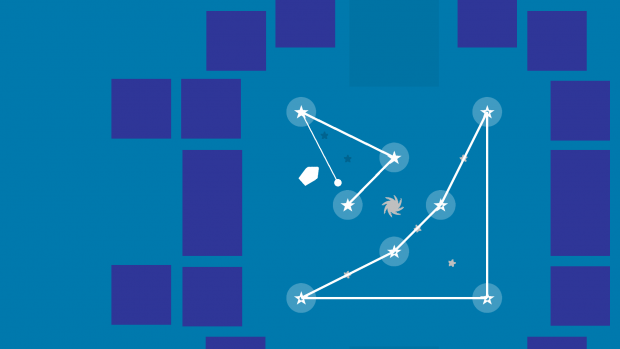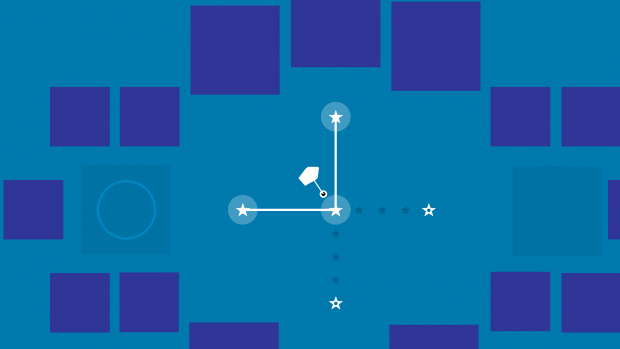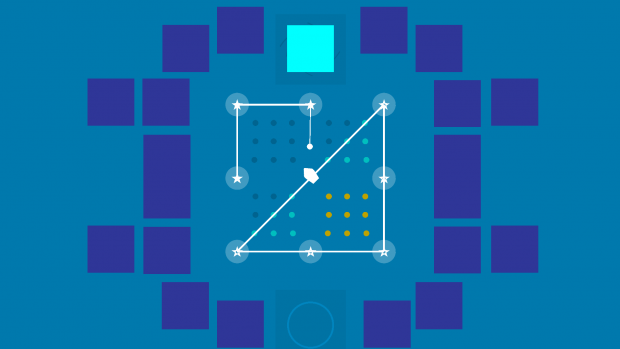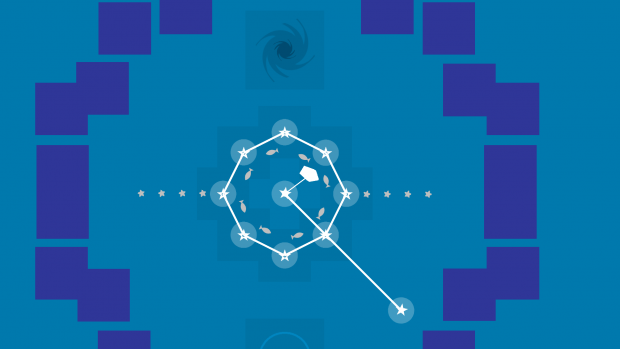
With the basic rowing and sketching interface complete, I pushed on with a period of rapid prototyping of new mechanics. The aim of this phase was to evolve the core gameplay whilst not being too concerned about the underlying art or code.
Planning
I began by figuring out how to add depth to the game world without affecting the interface. In particular I concerned myself with:
- Constellations - how could I add more depth to the game via stars, lines and shapes?
- Sea life - how could I add more depth to the game via fish and their properties?
I returned to my sketchpad and spent a few days drawing out various ideas. Turns out I had an excess of ideas rather than a shortage but some ideas were more complex than others; I decided to focus on quick-to-add changes that would help me prove the core gameplay much faster.
Adding Constraints
The most important additions to the puzzles were various forms of constraints. I began by focusing on the constellations as it was very quick for me to add additional behaviour to the stars, lines and shapes. I tried various ideas such as stars that couldn't be interacted with until empowered somehow, differing classes of stars that couldn't be connected to each another etc. Then I added constraints to other game world objects: for instance fish or obstacles that could destroy stars, lines or shapes. This opened up a large range of possibilities with not a lot of extra work.
One of the early constraint-based puzzles is shown below. The aim here was to activate all starfish whilst avoiding drawing a shape around the octopus in the centre of the puzzle (it's job was to destroy any shape that tried to capture it):
This puzzle can actually be solved with a single shape. The role/representation of the octopus was later changed but the associated gameplay was carried forward.
Encouraging Experimentation
With the free/open nature of the sketching, I had to ensure the player had a way to undo their actions. I added a function to let players destroy stars, lines and shapes at will by holding a mouse button and rolling their cursor over the desired item to remove: this enabled them to try various patterns and undo mistakes without being punished. In one of the early puzzle shown below, the player had to break the existing constellation before they could draw a line or shape to capture the inactive starfish:
I added an extra undo function later as a result of playtesting but the above idea still remains. To encourage experimentation even further, I implemented special types of puzzles where the player could only reveal vital [but hidden] bits of information about the puzzle by trying things out. In this example, the player receives new information about the underlying fish by drawing various shapes:
Dynamic Puzzles
One of the more exciting additions - and one that I am currently exploring in great depth - is moving constellations and sea life. Below is a very basic example of the rotation code I implemented: the special fish in the centre have the power to rotate stars around a pivot point once activated. This system is fully dynamic and presents a broad range of possibilities for moving the game forward.
...and more!
These are just a few examples of some of the mechanics I tried out during the rapid prototyping phase: by the end, I had a fully-formed gameplay prototype I was ready to share with friends. Although I hadn't implemented everything I wanted to just yet, I had about 10-20 minutes of gameplay so the game was ready for feedback. I was already confident the game had way more possibilities for future demos.
Conclusion
So that's it for the 'Discovering Observatorium' series. I hope you've enjoyed reading about the inception of the game and how I evolved the basic mechanics.
Moving Forward
The game is currently in full production and I have more information to share regarding early:
- Art
- Story
- Audio
- Playtesting
- Demonstrations
...but will cover these in future articles.
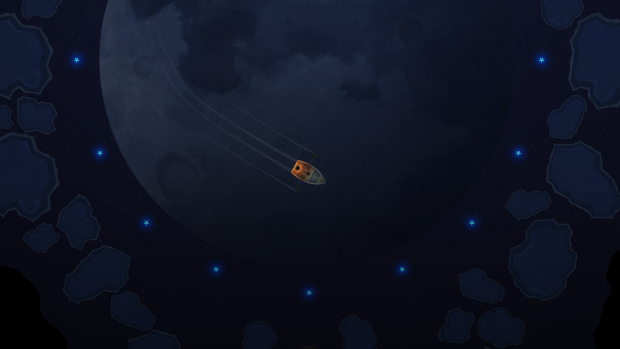
If you have any comments/suggestions please post below and I will try and respond.
Thanks for reading!
Clive Lawrence
The Man Who Flew Away
